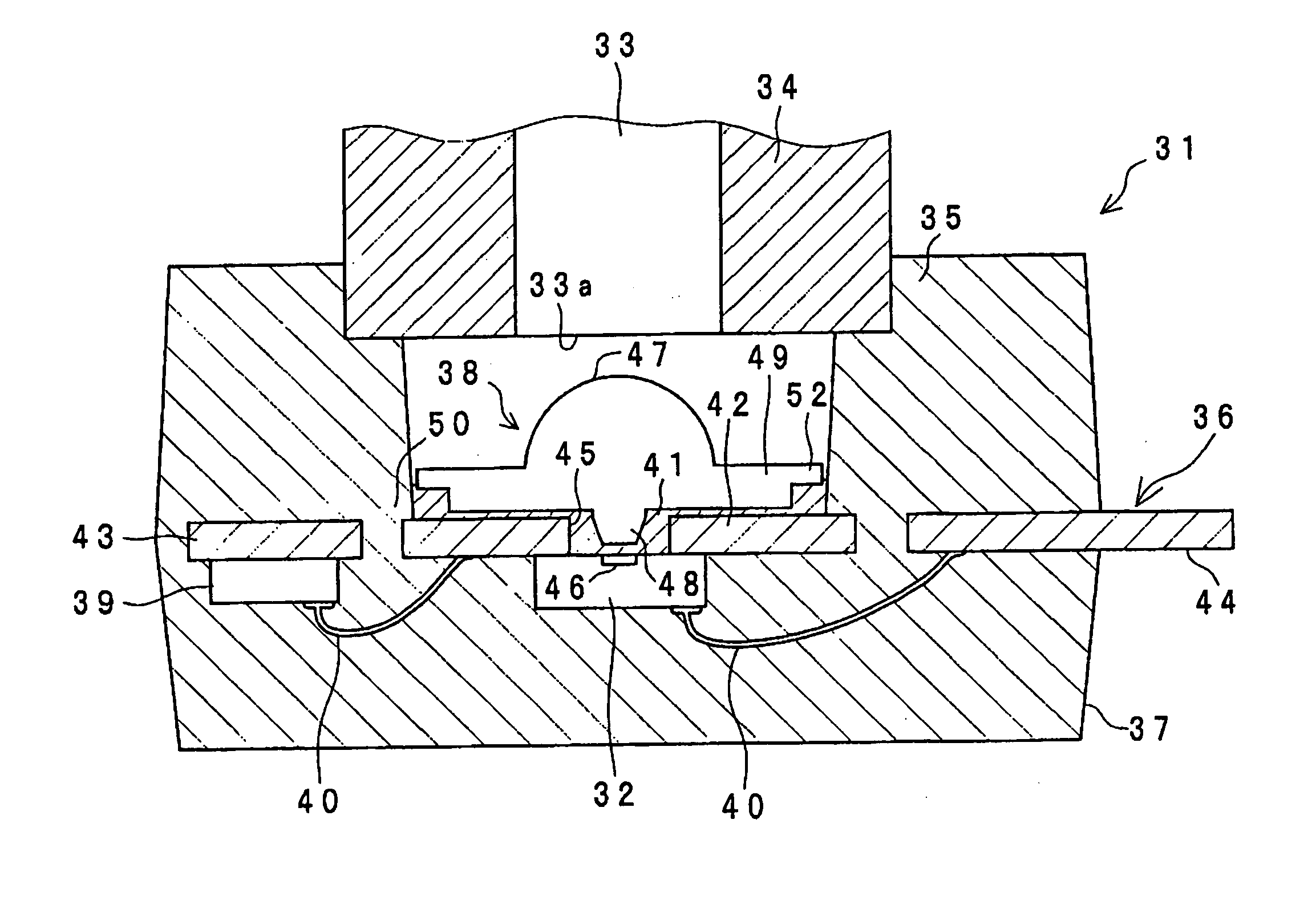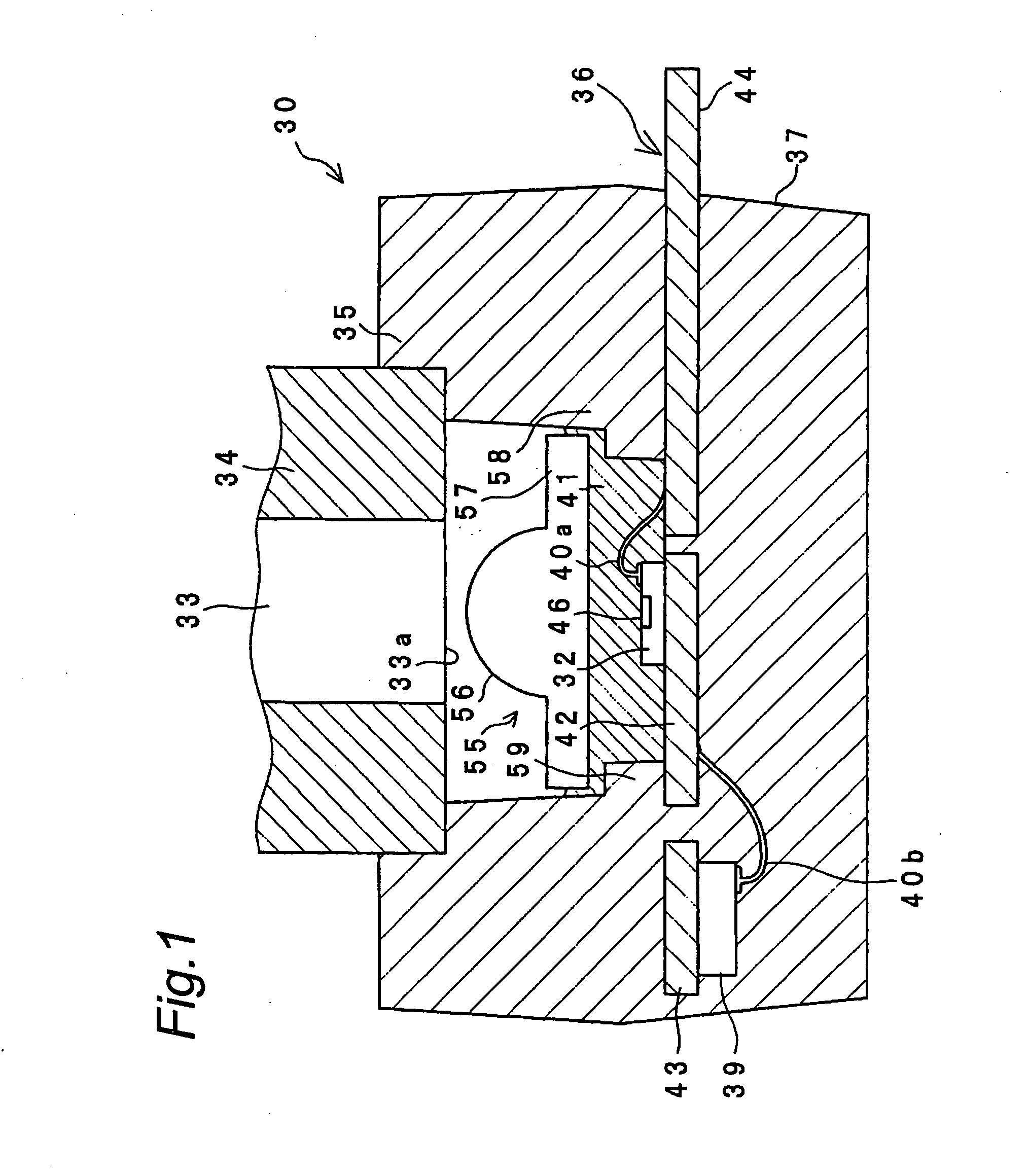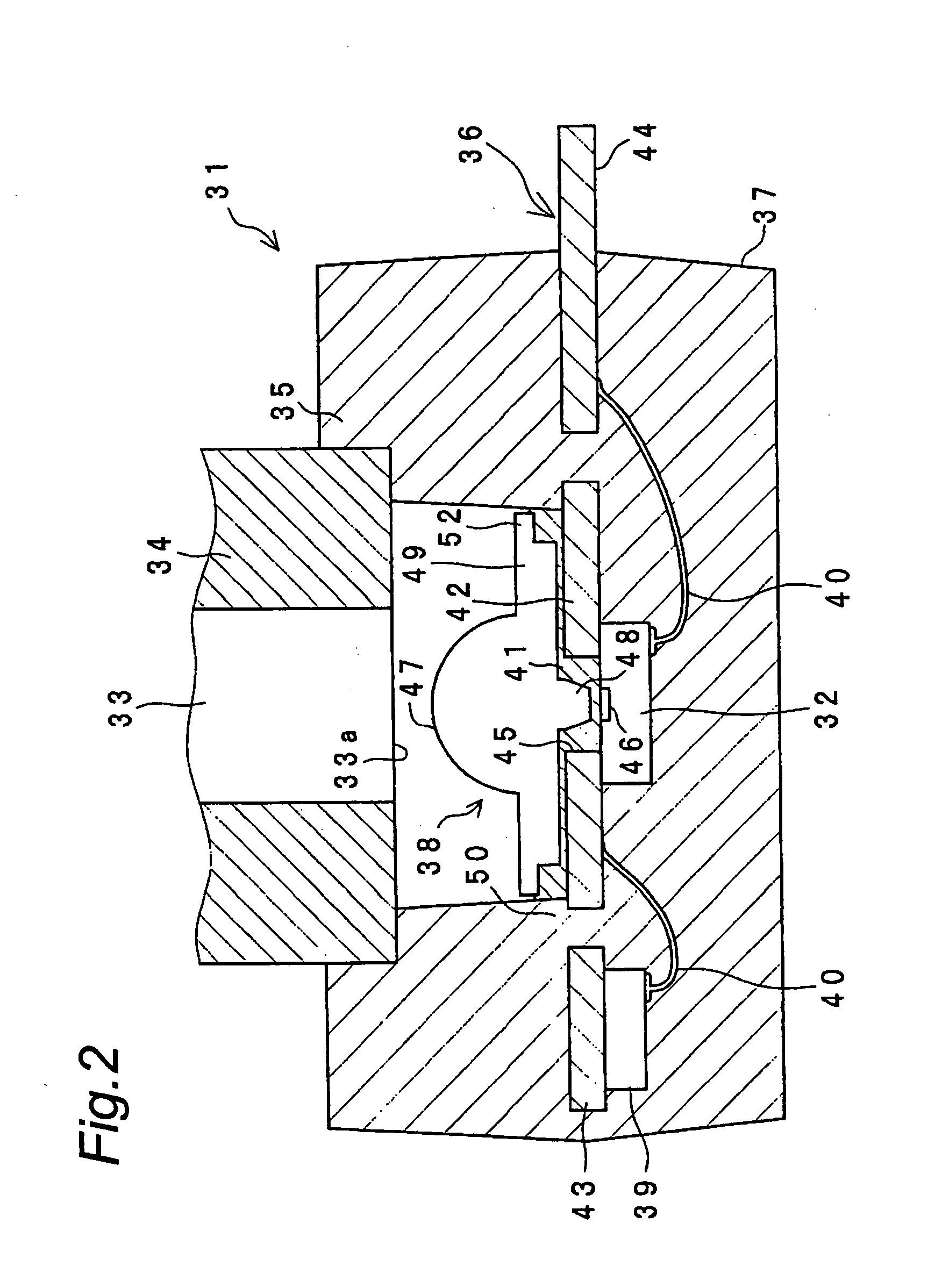Optical Coupler
- Summary
- Abstract
- Description
- Claims
- Application Information
AI Technical Summary
Benefits of technology
Problems solved by technology
Method used
Image
Examples
first embodiment
[0091]FIG. 1 is a longitudinal sectional view of the optical coupler of the present embodiment. The optical coupler 30 is a device for connecting an optical element 32 to an optical fiber 33 in an optically transmittable state (so-called optically coupled state) in order to carry out optical communications. The optical element 32 is a semiconductor that has an optical function and is provided by, for example, a light emitting element such as a light emitting diode or a vertical-cavity surface-emitting laser (VCSEL) or a light receiving element such as a photodiode.
[0092]The optical fiber 33 is a cable formed in an elongated shape with flexibility and serves as a light transmitting medium that transmits light from one end portion to the other end portion. That is, light incident from one end portion of the optical fiber 33 passes through the inside of the optical fiber 33 and is emitted from the other end portion of the optical fiber 33. The one end portion of the optical fiber 33 is...
second embodiment
[0119]In an optical coupler 31 of the present embodiment, a through hole is provided at a lead frame, and an optical element is placed in the position of the through hole on the lower surface of the lead frame.
[0120]FIG. 2 is a longitudinal sectional view of the optical coupler 31 of the present embodiment. It is noted that the members having the same construction as that of the optical coupler 30 shown in FIG. 1 are denoted by the same reference numerals as those of FIG. 1, and no detailed description is provided for them.
[0121]In FIG. 2, a through hole 45 is formed at the optical element mounting portion 42 of the lead frame 36, and an optical element 32 is placed on the lower surface of the lead frame 36 so that its optical surface 46 is located at the center of the through hole 45. Then, the optical element 32 is electrically connected to an external connection portion 44 via a bonding wire 40.
[0122]A lens member 38 is placed facing the through hole 45 on the upper surface side ...
PUM
 Login to View More
Login to View More Abstract
Description
Claims
Application Information
 Login to View More
Login to View More - R&D
- Intellectual Property
- Life Sciences
- Materials
- Tech Scout
- Unparalleled Data Quality
- Higher Quality Content
- 60% Fewer Hallucinations
Browse by: Latest US Patents, China's latest patents, Technical Efficacy Thesaurus, Application Domain, Technology Topic, Popular Technical Reports.
© 2025 PatSnap. All rights reserved.Legal|Privacy policy|Modern Slavery Act Transparency Statement|Sitemap|About US| Contact US: help@patsnap.com



